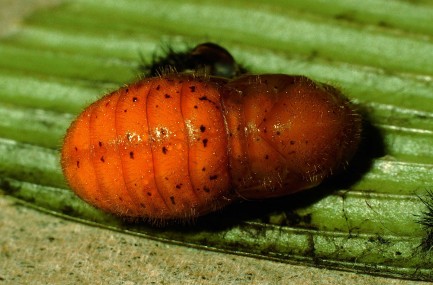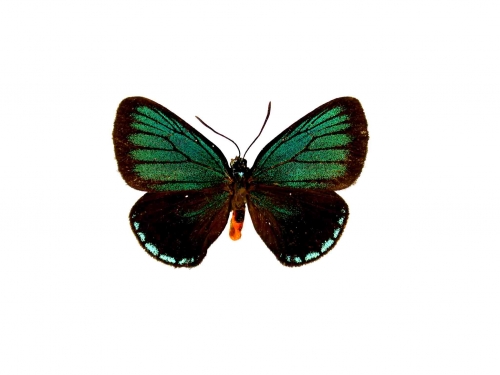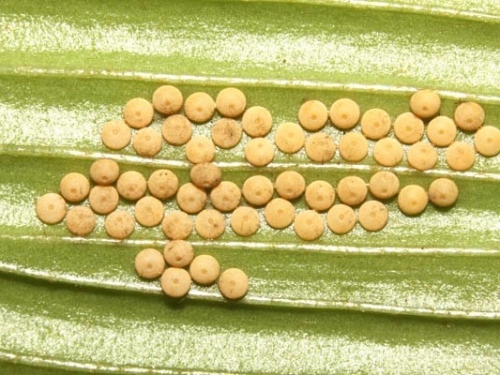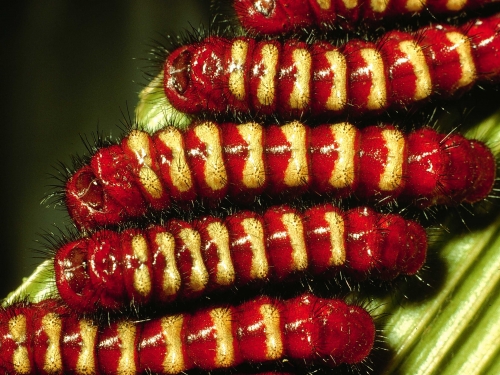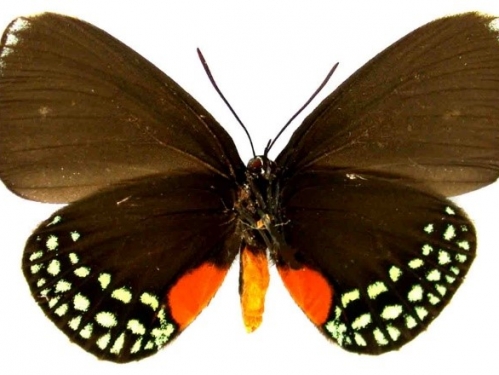Because they are filled with poison, Eumaeus godartii butterflies are big, gaudily iridescent and flap about like they have no place to go. Even their caterpillars are conspicuous, congregating in groups to munch cycad plants all while sporting flashy red and gold coloration. Their ostentatious qualities all signal to predators that they are a not a good meal; in nature, being toxic protects organisms from being attacked if their predators know it.
New research published in the Feb. 8 issue of the journal the Proceedings of the National Academy of Sciences and led by the Smithsonian’s National Museum of Natural History butterfly curator Bob Robbins tells the evolutionary tale of how these six poisonous butterflies gained their toxin-laced defenses as well as the bold colors and behaviors that tell all would-be predators to steer clear.

